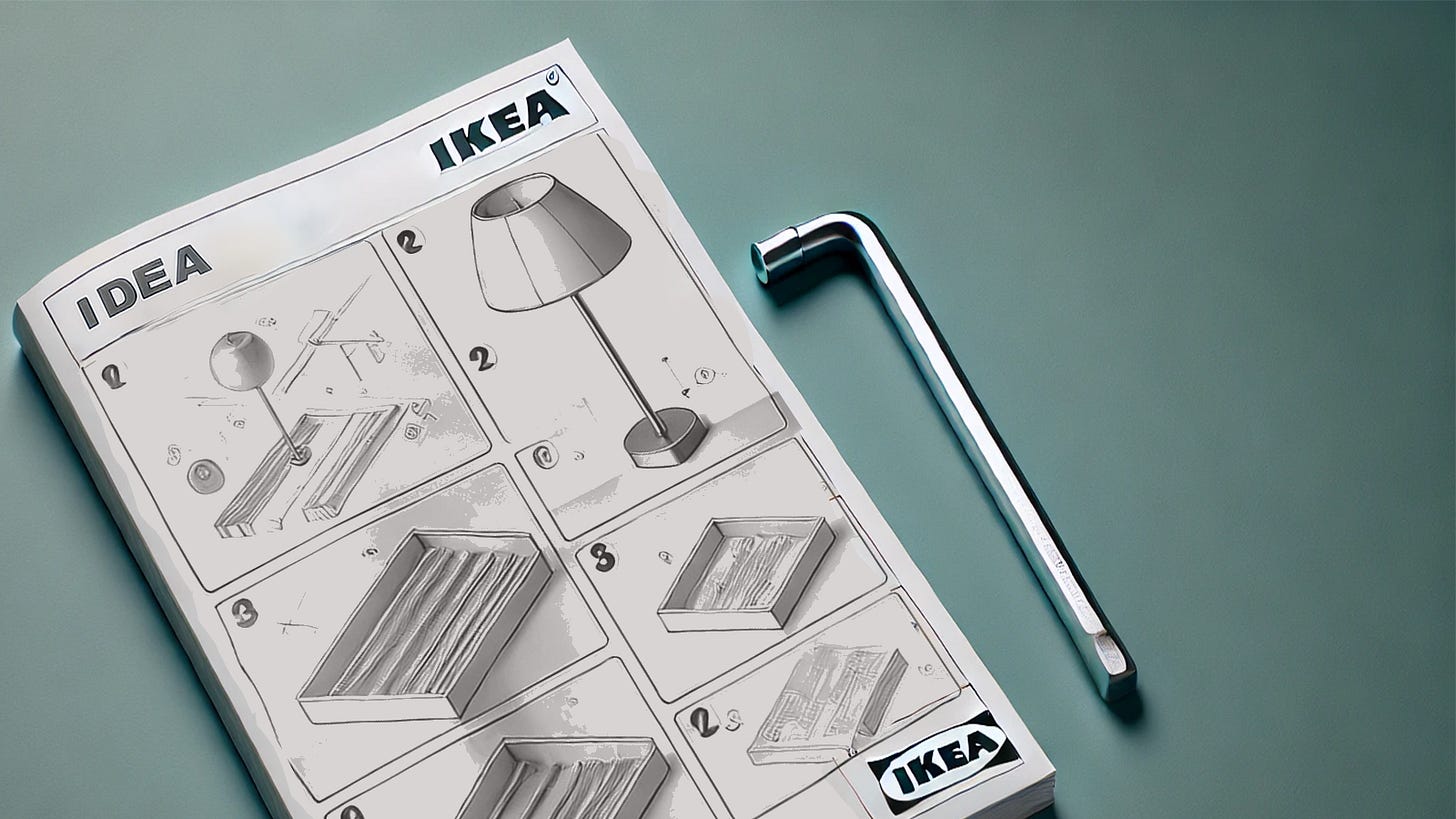If you've already had the experience of buying furniture from the famous Swedish chain IKEA, you've probably already experienced what I'm going to describe in this article. When we assemble a piece of furniture designed by the brand ourselves, we develop an attachment to it. I am living proof of this. When I lived in Germany for a year, I bought a POÄNG armchair. All IKEA products have these Nordic names that seem to mean something, but don't mean anything.
The armchair, cheap but extremely comfortable, served me so well that I wanted to bring it to Brazil upon my return. Well, I dismantled the said one and brought it in the suitcase. She stayed in my house for many years, until my wife gave me an ultimatum to replace her with a younger one, at which point my parents inherited her. Guess where I sit when I visit them?
This sense of ownership increased by participation in assembling the furniture is not exclusive to me. It is shared by all consumers on the network and has been studied by behavioral scientists as a cognitive bias and dubbed the "IKEA Effect."
But what does this have to do with mergers and acquisitions? Much more than it seems at first glance. This is probably my favorite topic in behavioral science and that's why I dedicated an entire article to the topic. I'll give a little spoiler before we dive deeper:
1- Founders must be aware of their own bias in attributing value to the company they built
2- The buyer must participate in building the deal and the companies' vision of the future together to be positively biased by the IKEA effect.
The Origin of the IKEA Effect
The IKEA effect was identified and named in 2011 by researchers Michael I. Norton, Daniel Mochon and Dan Ariely (the one in the photo chatting with me and my partner Luisa) in their study "The IKEA effect: When labor leads to love ".
They observed a tendency for people studied to pay 63% more for a piece of furniture they assembled than for a piece of furniture purchased already assembled, even if the end result is imperfect. This phenomenon is not just limited to furniture, but extends to various areas of life, from cooking to professional projects, revealing a deep human tendency to attribute greater value to what we help to build.
Another similar effect that also comes into play here is the endowment effect, which causes individuals to value an item they have in their possession more than the same item when it is not their property.
As a founder you are susceptible to both. You built and own a good portion of the company. The first step to using the IKEA effect in an M&A deal is to be aware of its influence on yourself.
Business Applications
In addition to IKEA, several other companies were already experimenting and benefiting from the effect before it received its name. Those stores where you assemble your own teddy bear, for example, appeal to this effect. Nike tried Nike By You and Lego is a separate chapter, but there is also Lego Ideas, both initiatives in which the consumer designs the product and thus gains attachment to them. Not to mention an entire DYI (do it yourself) industry that fills kitchens, workshops and garages with equipment and gadgets around the world.
And if you think that this doesn't apply to the world of software and technology, I'm going to prescribe a dose of medicine for you. Watch the Netflix series "The Playlist" about Spotify. At a certain point in the history of the music streaming startup, CEO Daniel Ek insisted that the service should be free for the consumer. But this created a negotiation and legal problem. Record companies needed to receive a cut of the company's revenue, to be viable it needed a revenue model.
The lawyer Petra Hansson then adopts a strategy to convince the entire management team. She takes a set of beads and threads to make colorful necklaces. Ask everyone to assemble their necklace. After they are attached to them she takes scissors and threatens to cut them. Executives resist. They created an attachment to the necklaces. It draws a parallel with Spotify playlists and creates the freemium model where the user has the free service, but needs to pay to maintain their personalized playlists. Whether this actually happened doesn't matter, it's a beautiful demonstration of the IKEA effect.
It is useful to understand the business applications of the effect. I bet your head is already buzzing with ideas on how to empower your customer to customize or build your product with you to increase Lock-In. Great, that's exactly what we're going to do in relationships that could lead to M&A.
Applying the effect to building relationships
How to give your interlocutor the tools to build something with you? First let's think about leaving space for him to build. Start by letting go of a future of the company where you have the reins in your hands. This will give you the psychological freedom you need to create this space.
We are talking here about 60% attitude and 40% technique. The most important thing is to pay attention to your attitude, your verbal language and especially your body language. Perceiving yourself with a possessive posture is the first step to changing it. This applies to all phases, but let's discuss each one.
I- Flirting and Partnership Phase
Before there is a deal on the table, you are building a relationship and a partnership, formal or informal. What part of this can your interlocutor build?
1- How will you relate? Will you have a recurring schedule? Will there be any rituals? Any event where you met the first time and where you might meet again?
2- How can companies get closer? Is there a possibility of partnership? What does the other party have to gain? What value does it have to extract?
Leave space to listen to the answers, so that the other party can propose them. You are building a sense of ownership.
There is one more step that could be interesting: make the interlocutor put on your shoes. Don't just let him talk about what's important to him. Make him see what is important to you. Sit in your founder's chair.
II - Deal Negotiation
There are miles of space here to build the deal. You shouldn't leave all the decisions in the hands of the other party, but don't arrive with all the conditions rigidly defined either. Strategically, identify a series of factors that are not really important to you, but that are relevant to listening to the counterparty about how he would like to conceive this part of the deal. We are talking here about conditions (cash vs shares), timing (what is the earn-out deadline), external communication (what a press release would be like) and internal communication (how we do formal communication for employees of both companies) among other examples .
Another major building block is the vision of what the combined operation will be. What will each person’s roles be? How will operations integrate? How to generate synergies? All of these questions have room for joint construction and to take advantage of the IKEA effect.
III - Post Deal
Life after the deal is a separate topic. I don't want to go too deep into it now, but here you become part of the same team as your buyer or the company you merged with. In this role, whenever you nurture the other party's sense of ownership, without effectively losing power, you will make your life easier.
Practical tips
Let's go to practice. What tools can you effectively use to make the other party feel like they are building this Lego with you?
Keep reading with a 7-day free trial
Subscribe to Exit Strategy to keep reading this post and get 7 days of free access to the full post archives.




